Contents
What is Shallow Foundation?
The shallow foundation is also known as a stepped Foundation. If the depth of foundation is less than the width of foundation then it is known as Shallow or stepped Foundation.
It can be used where the bearing capacity of soil on which the structure is to be constructed is maximum then Shallow Foundation can be used. Minimum depth of this Foundation is 800mm and maximum depth not to be taken more than 4 meters.
Read Also: Difference Between Shallow Foundation and Deep Foundation
Type of Shallow Foundation
- Isolated footing or column footing.
- Wall footing.
- Continuous footing.
- Inverted arch footing.
- Spread footing.
- Raft or mat footing.
- Combined footing.
- Strap or cantilever footing.
1. Isolated footing or column footing:-

This type of footing is used for an individual column. This isolated footing is further classified into three types. They are as follows:-
- Stepped footing.
- Simple spread footing.
- Sloped footing.
1. Stepped footing:-
In this type of footing on a base Foundation a step is raised, which is also known as pocestar. The step or pocestar is further followed by a column. This type of footing is generally used where a heavy load is coming from a superstructure.
2. Simple spread footing:-
In this type of footing, only a base Foundation is constructed. which is further followed by a column. This type of footing is used for a small structure where that type of heavy load is not coming from the structure as in case of stepped footing are concerned, there these type footings are used.
3. Sloped footing:-
In this type of footing also only base Foundation is constructed which is further followed by a column. But when we cut a section from the center we can see that this footing is in the shape of a trapezoid.
Advantages of isolated footing:-
- These type of footings are very economical because shuttering material requirement is very less.
- To construct this type of footing no skilled labor is required.
- It also saves time as these footings are of the very basic shape.
2. Wall footing :-
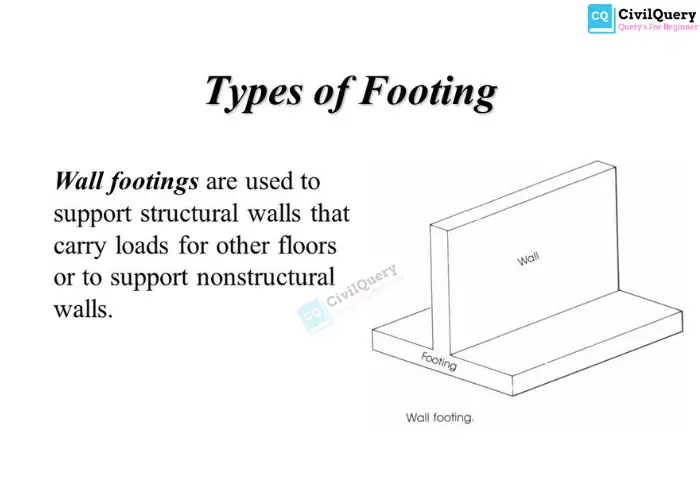
Wall coating for further classified into two types
- Simple wall footing.
- Stepped wall footing.
1. Simple wall footing :-
In this type of footing, one base foundation is constructed which is further followed with a wall. This type of footing is used for load-bearing structures but with less amount of structural load.
2. Stepped wall footing :-
In this type of footing on a base of foundation, two more steps are constructed which are further followed with a wall. In this, the projections of the steps are taken 15 centimeters for either side. The width of the foundation has to be twice or more than that of the wall. This type of footing is used where the structural load is very heavy.
3. Continuous footing :-
In this type of footing a single slab type footing base is created. This type of footing is done when more than one column is in a row. This footing transfers load to a bigger area.
4. Inverted arch footing :-
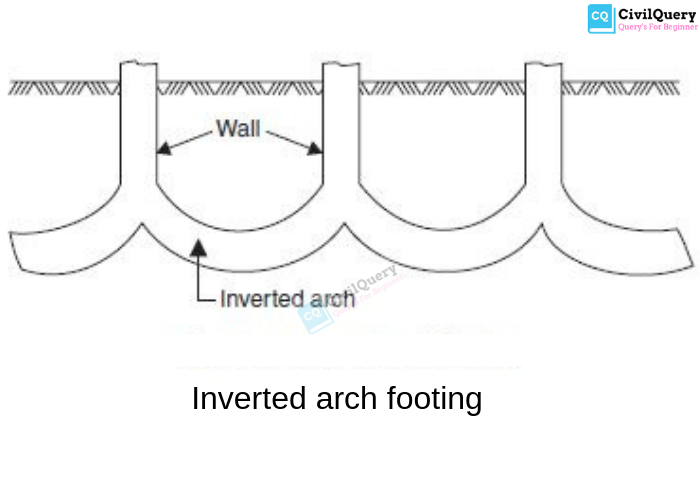
This type of footing is not used commonly. The inverted arch footing is used to satisfy the special condition. When the bearing capacity of the soil is very less in that condition we make use of this footing. Also if deep excavation is not possible then this type of footing is done.
Read Also: Why steel is used in Construction? What are the Structural Steel Types?
Read Also: What is Deep foundation? Types of Deep Foundation.
CivilQuery
5. Spread footing :-
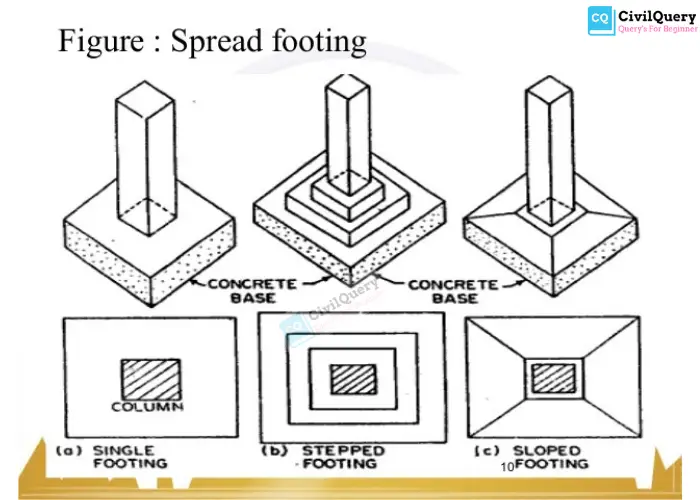
This is also known as a stepped spread foundation. In this type of footing, a base foundation is created which is an RCC member. Above which three steps are created which are done by brickwork. These three steps are not RCC members. Which are further followed by a wall? In this type of footing, ground level is maintained above all the steps. The projection of the first step below the wall is ( t + 100 ) mm, here ( t = thickness of wall ). Projection of the second step below the first step is ( t + 200 ) mm, followed by the third step it is ( 2t ) mm. Lastly, the projection between the third step and base foundation is ( t + 400 ) mm. The width of the base foundation is 2( t + 150 ) mm.
6. Raft footing or mat footing :-
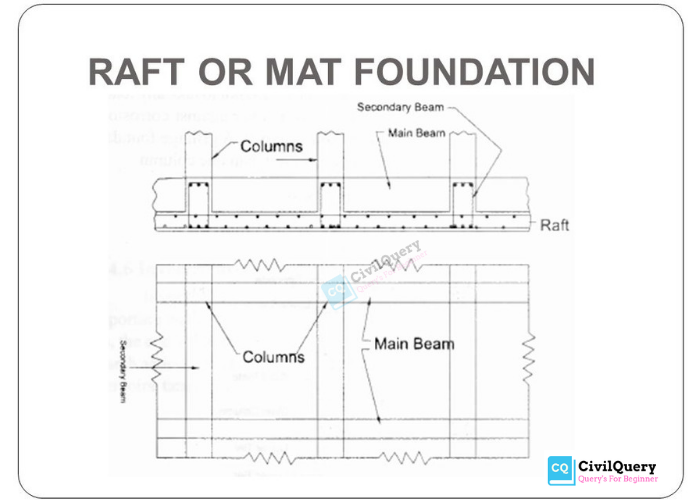
This is also known as combined type footing or foundation. It covers the whole structure. It provides the stability and strength to the structural member like RCC wall and columns. Above the soil surface, a base is created of any thickness, it is just done to create a base for Raft Foundation. On that base, this raft foundation is constructed. When bearing capacity of a soil is less than, raft or mat footing is used.
7. Combined footing :-

When two or more than two columns come in a row then this type of footing is constructed. In this, there are two types of footing they are,
- Rectangular shaped combined footing.
- Trapezoidal shaped combined footing.
The rectangularly shaped footing is done when the load coming from two or more columns is uniform or the same.
1. Rectangular shaped combined footing :-
2. Trapezoidal shaped combined footing :-
Trapezoidal shape footings are done when the load coming from two or more columns is not equal or same.
8. Strap footing or cantilever footing :-

In this, if two or more columns are in a row, and these columns are interconnected by a beam. These types of footings are known as strap or cantilever footings.
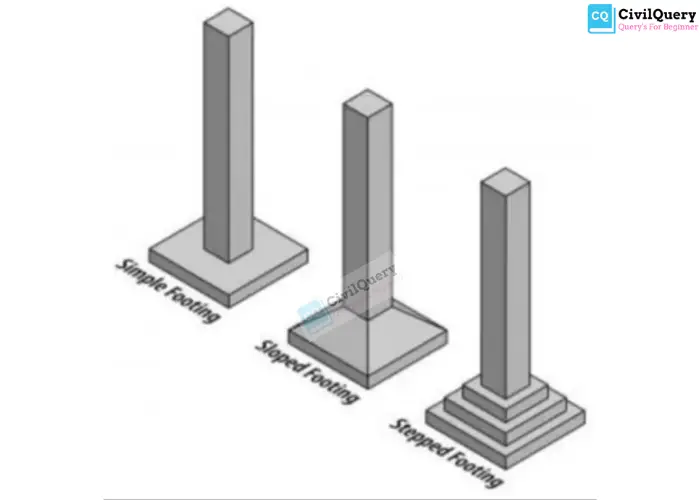

8 thoughts on “What is a shallow foundation? Types Of Shallow foundation.”